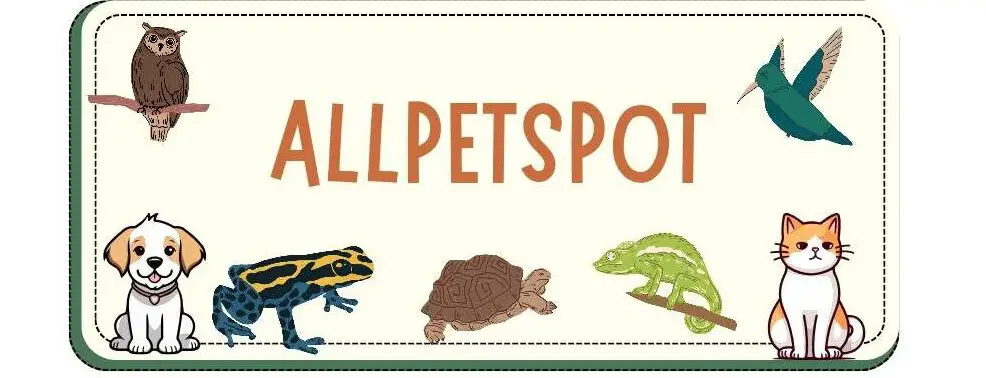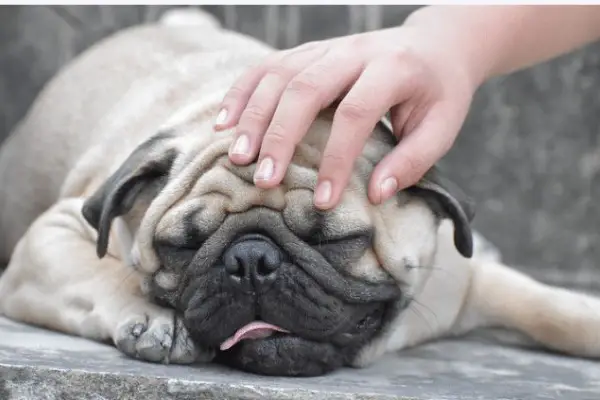There are so many Pug dying symptoms, Pug owners should know so as to help them get the best comfortable dying days on earth.
In this post, we will outline and discuss some of the most common Pug dying symptoms you should know.
We will also outline some common ways you can help your dying Pug to make life easier and better.
Pug Dying Symptoms
Unusual freezing, changing demeanor, changes in body odor, excessive weight loss, decreased breathing rate, lack of interest in anything, faraway look in their eyes, increasing self-isolation, and death are the most typical indicators that your Pug is dying.
Now, let’s go over the indicators that your Pug is dying that we described above.
Here are some indicators that your Pug is dying that you should be aware of:
1. Pug constantly losing interest in favorite activities
As he approaches the end of his life, your Pug loses interest in everything in his environment, including his favorite hobbies and you, his owner.
He can no longer meet you at the door because places he used to like are now forbidden, and enticing things he used to admire are now revolting.
Without a question, this is one of the most common and sad signs that your Pug’s quality of life is declining.
Pug suddenly loses interest in everything that moves him or her, and he or she wishes to be alone. This shows the end is near.
2. Pug starts to develop skin problems and excessive shedding
Despite the fact that your Pug is totally covered in short fur, you’ll be able to witness how dehydration affects the skin of a dying Pug.
Day by day, the quality and condition of the hair and skin of a dying Pug will keep on deteriorating.
No matter how hard you try to keep it smooth and silky, it will eventually dry out and become harsh.
Even with meticulous Pug care, your Pug’s beautiful hairs will ultimately fall off more often as their lives come to an end
Excessive shedding, paired with your Pug’s age, is a sign that he or she is reaching the end of his or her life.
3. Pug develops respiratory issues that persist
When your Pug was younger, he may have enjoyed racing about and playing, but as he gets older, he may be unable to do so without panting.
You may notice that your dog takes longer to inhale and exhale, or that he or she has trouble catching his or her breath.
Heart failure or difficulty with the respiratory system are the most common causes of respiratory issues.
Your dog’s ability to breathe will most likely decline with time.
Because of their snout shape, pugs are vulnerable to respiratory problems; imagine how much worse it becomes as they get older.
The dog’s breathing grows shallow as it approaches death, with very long intervals between breaths that can last anywhere from a few days to a few hours.
The dog’s heart rate will drop from 120 to 80 beats per minute to 70 to 60 beats per minute if his pulse is very weak.
You will notice that your dog is breathing shallowly and is not moving in the final hours. Your dog will usually sleep in a dark or concealed corner of your house.
4. Pug constantly lose coordination
It’s likely that your athletic and energetic Pug is losing their sense of coordination if you notice them tripping or having trouble controlling their muscles.
Coordination problems can be caused by underlying ailments, ear infections, or other injuries, and they could be a sign that your Pug is nearing the end of his life, depending on his age and present condition.
Contact your veterinarian if you notice a chronic lack of coordination or are concerned about your Pug’s stability. Make sure your Pug isn’t sick or dying.
5. Pug can’t maintain a steady body temperature
Pugs’ capacity to regulate their own body temperatures may deteriorate as they age or develop other health issues, causing them to lose body heat often.
As a result, a Pug on the point of death will have a lower body temperature than usual, which the owner will notice.
Just remember that if you live in a cooler climate, your puppy may become overheated, and if you don’t, your puppy may die or become unwell.
You may also keep your dog warm by using a heated bed or a warm blanket to raise his body temperature. Also, schedule an appointment with your veterinarian.
6. Pug uncontrollably loses weight
Pugs prefer to eat less as they get older, which can lead to weight loss, which is frequent in senior Pugs.
Most Pug owners would find this difficult to observe or endure, and going through it with their Pug would take a lot of fortitude.
If your Pug continues to lose weight after your veterinarian has ruled out any other causes, the end is close.
It’s rare for senior dogs to become malnourished and thin just due to their age.
Weight loss, on the other hand, is frequently caused by degenerative conditions such as chronic renal or hepatic insufficiencies, as well as cancer, all of which might lead to your Pug’s death.
One of the causes of weight loss in senior Pugs is muscle deterioration owing to aging.
7. Pug develops social detachment
As Pugs approach death, they prefer alone and tend to withdraw from the typical family engagement.
Pugs, by their very nature, want to be a member of the family and will stick with you wherever you go.
Finally, you’ll notice that they’re detaching a little more each day. When you arrive home, they no longer get out of bed to meet you.
They won’t even follow you around the home at this stage which is really difficult to watch your dog at this age.
Your dog will spend nearly every waking hour in his or her bed. Distancing, physical, and emotional alienation are prevalent as death approaches.
Your Pug no longer wants to meet people or go for a walk, or even visit anyone anymore.
8. Pug develops constant muscle tremors
Muscle tremors in Pugs can be caused by a lack of food, and as a result, your Pug may get dehydrated and develop muscular tremors.
Excessive activity can cause muscular tremors, which are a telltale indicator of old age in Pugs.
Your Pug’s glucose levels drop when he doesn’t eat or drink, resulting in weakness and muscular spasms.
Tremors in Pugs are characterized by twitching, shaking, and a dip in body temperature if you’re not familiar with them.
The best thing you can do for your dog is to make sure he or she is well-fed and warm by covering them with a blanket.
To keep your Pug warm and comfortable in its dying days, spend some time embracing it and chatting to your vet.
9. Pug develops slow mobility rate
Your Pug’s mobility will degrade even more as he or she gets older.
At an advanced age, the dog’s strength may diminish to the point that he or she is unable to stand.
Your Pug’s legs may begin to tire, making climbing stairs or crossing slippery areas problematic.
Your Pug may become unable to stand and move as time passes; some may even struggle to lift their heads.
Slowing down your Pug’s mobility is one of the final steps before he or she surrenders.
10. Pug develops uncontrollable bladder issues
Keep a watch on your Pug’s toilet habits, since an unregulated bladder and anal sphincter control are two more symptoms that your Pug is dying.
Your Pug will urinate and defecate in strange places as he approaches death and he has little control of this.
Even the most well-behaved or well-trained Pug can be fooled by these signs. Urination will be unpredictable and intermittent.
Your Pug will have watery diarrhea that is occasionally foul-smelling and sometimes blood-tinged as he approaches death.
Due to a complete lack of muscular control, your dog will urinate and defecate for the last time after death.
11. Pug develops constant fatigue
You’ll notice that your once-active dog now likes to lie down in one location and not get up.
They won’t be able to lift their heads because they won’t have enough energy.
Your Pug may lie in the bed all day and wouldn’t come up to greet you as usual.
Anemia, a lack of energy, or poor circulation can all cause fatigue. It’s most likely anemia if your dog’s gums are white instead of a healthy pink.
If your Pug’s gums are pink and become white when you push on them for many seconds, it might be an indication of circulatory collapse, which can lead to death.
12. Pug starts to vomit regularly
Even if your dog isn’t sick, you’ll notice that they vomit a lot as they die.
Vomiting is a typical indication of sickness in dogs, but it can also mean that the digestive system is slowing down.
When the digestive system slows down due to an upset stomach, food takes longer to digest, and your dog will vomit the undigested food in his stomach.
While vomiting can be distressing for both you and your dog, there are methods to make them feel better.
To make the treatment simpler for you and your dog, consult your veterinarian and choose food that is mild on your dog’s enlarged stomach.
Constant vomiting in your Pug as they become older is a symptom that they’re dying.
13. Pug starts hiding or seeking comfort
The last and most painful of the key indicators that a dog is dying is when your active Pug starts hiding.
Some dogs may sense that their time has come and will seek solace from their owners.
Staying with your dog during these final hours and soothing them with gentle petting and a calm voice is part of saying goodbye to your Pug with love and grace.
Take a break from work or whatever else you’re doing. Don’t leave your Pug to face the end on his own.
At the same time, try not to break down emotionally, no matter how tough it is. Do all you can to keep your cool, so you don’t upset your Pug.
Also, read the 10 common Pug sick symptoms.
How to care for a dying Pug
Here are some popular ways to care for a Pug that is dying:
- Provide a calm and pleasant environment for your dying Pug.
- Provide your Pug with the medical care and medications he or she needed.
- New activities or extended workouts should be avoided or limited.
- Provide your Pug with higher-quality food and keep a water dish nearby.
- Keep all sorts of anxiety-inducing stress at bay.
- Make sure there are plenty of blankets or cover him up if he becomes cold.
- Carefully approach your Pug and softly touch him so as not to surprise him.
- Your Pug should be fed smaller meals at regular intervals.
- The demand for solitude in your Pug should be acknowledged.
- Pain relievers or homeopathic remedies should be discussed with your veterinarian.
- You can use appetite stimulants to ensure that your Pug eats.
- Don’t forget to take your Pug to the vet.
- Always prepare for the worse.
I hope you now understand more about Pug dying symptoms you should know and how to care for a dying Pug.
Read more about Pug Separation Anxiety: 8 Signs & Solutions.










